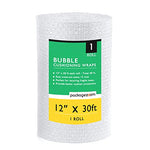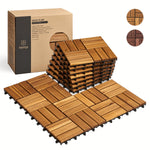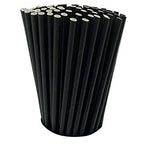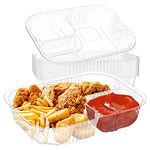You have no items in your shopping cart.
Plastic sheeting is a flexible and durable material that finds numerous applications in different industries. It is made from various types of plastic, such as polyethylene, polypropylene, and PVC, and is available in different thicknesses and sizes. This article explores the versatility and practicality of plastic sheeting, highlighting its uses across various sectors and discussing its benefits. Whether you're a contractor, gardener, or homeowner, understanding the applications and advantages of plastic sheeting can help you make informed decisions for your projects.
The Many Uses of Plastic Sheeting
Plastic sheeting has a wide range of applications due to its flexibility, strength, and resistance to moisture and chemicals. Let's delve into some common uses of plastic sheeting across different industries:
1. Construction and Renovation
In the construction industry, plastic sheeting plays a crucial role in protecting surfaces during renovation or painting projects. It can be used as a temporary barrier to shield furniture, floors, and fixtures from dust, paint, and debris. Plastic sheeting also acts as a vapor barrier, preventing moisture from seeping into walls and causing damage.
2. Agriculture and Gardening
Plastic sheeting is a staple in the agricultural and gardening sectors. It serves as a protective covering for greenhouse structures, helping to regulate temperature and create a controlled environment for optimal plant growth. Additionally, plastic sheeting is used as mulch, preventing weed growth and conserving soil moisture in garden beds and farming fields.
3. Packaging and Transportation
The versatility of plastic sheeting makes it an ideal material for packaging and transportation purposes. It is commonly used to wrap and protect goods during shipping, safeguarding them against moisture, dust, and other external factors. Plastic sheeting can also be used to create custom-made packaging solutions for fragile or irregularly shaped items.
4. Temporary Enclosures and Shelter
Plastic sheeting provides a cost-effective solution for creating temporary enclosures and shelter. Whether it's for construction sites, outdoor events, or emergency situations, plastic sheeting can be quickly installed to create a weather-resistant barrier. It offers protection from rain, wind, and UV radiation, ensuring a safe and comfortable environment for various activities.
5. Pond and Pool Liners
For water containment applications, plastic sheeting serves as an excellent choice for pond and pool liners. Its waterproof properties prevent leakage and help maintain water levels. Plastic sheeting liners are durable, flexible, and resistant to UV radiation, making them ideal for long-term use in aquatic environments.
6. Soundproofing and Insulation
Plastic sheeting can contribute to soundproofing and insulation efforts, reducing noise transmission and heat loss. When properly installed, it acts as a barrier to sound and helps maintain a more comfortable indoor environment. Plastic sheeting with insulating properties can also enhance energy efficiency by reducing heat transfer.
7. Crafts and DIY Projects
Plastic sheeting is a go-to material for various crafts and do-it-yourself (DIY) projects. Its versatility allows for creative applications, such as creating stencils, protecting work surfaces during painting or glue projects, or constructing lightweight structures. With different thicknesses and colors available, plastic sheeting offers ample opportunities for artistic expression.
Plastic Sheeting FAQs
FAQ 1: What is the most common type of plastic used for sheeting?
Polyethylene is the most commonly used plastic for sheeting due to its excellent durability, flexibility, and resistance to moisture and chemicals. It is available in various densities, such as low-density polyethylene (LDPE) and high-density polyethylene (HDPE), offering different levels of strength and barrier properties.
FAQ 2: Can plastic sheeting be used outdoors?
Yes, plastic sheeting can be used outdoors. However, it is essential to choose a plastic sheeting material specifically designed for outdoor applications. UV-stabilized plastic sheeting is recommended as it is resistant to sun damage and degradation caused by prolonged exposure to the elements.
FAQ 3: How can I secure plastic sheeting?
Plastic sheeting can be secured using various methods, including adhesives, tapes, fasteners, or by creating a tight seal with overlapping sheets. The choice of securing method depends on the application and the specific requirements of the project.
FAQ 4: Is plastic sheeting recyclable?
Yes, many types of plastic sheeting, particularly those made from polyethylene, can be recycled. It is important to check with local recycling facilities to ensure proper recycling practices. Additionally, choosing recycled plastic sheeting contributes to sustainable practices and reduces environmental impact.
FAQ 5: What are the benefits of using plastic sheeting in gardening?
Plastic sheeting offers several benefits in gardening, such as weed suppression, moisture retention, and soil temperature regulation. It helps create an optimal growing environment, reduces the need for chemical herbicides, and conserves water by minimizing evaporation.
FAQ 6: Can plastic sheeting be used for crawl space encapsulation?
Yes, plastic sheeting is commonly used for crawl space encapsulation. By covering the crawl space floor and walls with plastic sheeting, it creates a moisture barrier, preventing water vapor from entering the space. This helps control humidity levels, protect against mold and mildew growth, and improve indoor air quality.
Conclusion
Plastic sheeting is a versatile and practical material that finds numerous applications in various industries. Whether it's protecting surfaces during renovations, providing a barrier against moisture, or serving as a liner for water containment, plastic sheeting offers a cost-effective solution. Its flexibility, durability, and resistance to environmental factors make it an indispensable resource for contractors, gardeners, and homeowners alike. By understanding the diverse uses and benefits of plastic sheeting, you can harness its potential for your specific projects and requirements.
Remember, when using plastic sheeting, consider the specific needs of your application and choose the appropriate type and thickness. Whether it's for short-term use or long-term durability, plastic sheeting provides a reliable and customizable solution.








